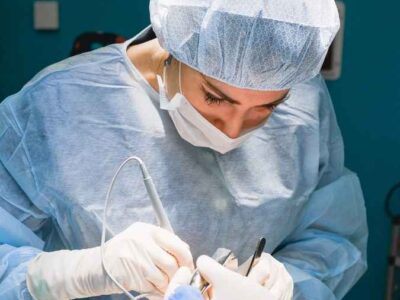Introduction
Rhinoplasty, often referred to as a nose job, is a highly sought-after cosmetic surgery aimed at reshaping the nose to enhance appearance or resolve medical issues like breathing problems. This extensive guide provides a thorough overview of rhinoplasty, detailing the procedure, its risks and benefits, recovery process, and when to seek medical advice.
Table of Contents
| Heading | Sub-Topics |
| Overview | Definition, Purpose, Surgeons Qualified |
| Who Might Want to Get Rhinoplasty? | Reasons for Rhinoplasty, Benefits |
| Who is a Candidate for Rhinoplasty? | Health Requirements, Psychological Readiness |
| What Does Rhinoplasty Do? | Nose Reshaping, Septum Correction, Nostrils Adjustment, Bumps and Dips Removal |
| Different Surgical Approaches to Rhinoplasty | Open Rhinoplasty, Closed Rhinoplasty, Cosmetic, Nonsurgical, Functional, Secondary, Rhinoplasty vs. Septoplasty |
| Procedure Details | Pre-Procedure Consultation, During the Procedure, Steps of the Procedure, Post-Procedure Care |
| Risks and Benefits | Benefits, Potential Risks, Long-term Results |
| Recovery and Outlook | Recovery Time, Healing Tips, Signs to Call Doctor |
| Conclusion | Final Thoughts, Importance of Qualified Surgeons, Realistic Expectations |
| FAQs | Common Questions and Answers |
Overview
Rhinoplasty is a type of plastic surgery that alters the shape and size of the nose. It can be performed for cosmetic reasons to improve facial appearance or for functional reasons to enhance breathing and nasal function. This procedure is typically carried out by surgeons trained in plastic surgery or facial plastic surgery.
Who Might Want to Get Rhinoplasty?
Individuals may opt for rhinoplasty for various reasons, including:
- Correcting congenital abnormalities: Addressing birth defects that affect the nose’s shape or function.
- Improving overall facial appearance: Enhancing the aesthetic appeal of the face by reshaping the nose.
- Opening blocked nasal passages: Fixing a deviated septum or other obstructions to improve breathing.
- Repairing facial fractures: Restoring the nose’s structure after injuries such as a broken nose.
- Restoring breathing function: Following diseases, cancer treatments, traumatic injuries, or burns.
Who is a Candidate for Rhinoplasty?
Ideal candidates for rhinoplasty should:
- Have completed facial growth: Typically, this means being at least 16 years old for girls and 18 years old for boys.
- Be in good physical health: Free from serious medical conditions that could impair healing.
- Have realistic goals: Understanding the limitations of nose surgery and aiming for achievable results.
- Seek the procedure for personal reasons: Not undergoing surgery to please someone else.
What Does Rhinoplasty Do?
Rhinoplasty can address several aspects of the nose, including:
- Correcting a bulbous, upturned, hooked, or droopy nose.
- Fixing a deviated septum.
- Adjusting the size and position of nostrils.
- Removing dips or bumps on the bridge of the nose.
- Changing the size of the nose to create facial balance.
- Opening blocked nasal passages.
Different Surgical Approaches to Rhinoplasty
Open Rhinoplasty
Used for major reshaping, this approach involves incisions to separate the skin from the bone and cartilage, providing a clear view of the nasal structure.
Closed Rhinoplasty
Used for minor reshaping, this method involves incisions made inside the nose.
Additional Types of Rhinoplasty
- Cosmetic Rhinoplasty: Enhances the nose’s appearance.
- Nonsurgical Rhinoplasty: Uses dermal fillers for temporary corrections.
- Functional Rhinoplasty: Restores form and function after medical treatments or injuries.
- Secondary Rhinoplasty: Addresses issues from a previous rhinoplasty.
Rhinoplasty vs. Septoplasty
While rhinoplasty improves the nose’s external appearance and structure, septoplasty focuses on repairing internal structural issues to enhance breathing. Both procedures can be performed simultaneously.
Procedure Details
Before the Procedure
Before undergoing rhinoplasty, you’ll have an initial consultation with your surgeon to discuss goals, expectations, and surgical options. The surgeon will examine your face, take photographs, and outline potential outcomes and risks.
During the Procedure
Rhinoplasty is usually an outpatient procedure performed under general anesthesia or local anesthesia with intravenous sedation. The surgery typically takes place in a hospital or outpatient facility.
Steps of the Procedure
- Incisions: Made inside the nostrils (closed rhinoplasty) or across the base of the nose (open rhinoplasty).
- Reshaping: The surgeon raises the skin covering the nasal bones and cartilage and reshapes them.
- Repositioning: The skin is replaced and secured with stitches.
After the Procedure
Post-surgery, a plastic splint is applied to minimize swelling and maintain the new shape. Cotton gauze may be placed inside the nose. Swelling and bruising around the nose and eyes typically resolve within a few weeks.
Stages of Swelling
- First Four to Six Weeks: Noticeable swelling and possible bruising.
- Three Months Post-Surgery: Most swelling subsides.
- One Year Post-Surgery: Full results are visible as all swelling dissipates.
Risks and Benefits
Benefits of Rhinoplasty
- Improved facial appearance.
- Corrected structural abnormalities.
- Enhanced nasal function and breathing.
Potential Risks
- Nasal septal perforation.
- Infection and nosebleeds.
- Poor wound healing or scarring.
- Unsatisfactory appearance or need for revision surgery.
- Changes in the sense of smell and pain.
Recovery and Outlook
Recovery Time
Full recovery can take up to a year, with most swelling subsiding within the first few months. Minor swelling can persist.
Tips for Speeding Up Healing
- Apply cool compresses (not ice) to cheeks or under the eyes.
- Keep the head elevated, especially when sleeping.
- Avoid heavy lifting and any impact to the face.
- Follow all post-operative instructions and attend follow-up appointments.
When to Call the Doctor
Contact your healthcare provider if you experience:
- Difficulty breathing.
- Severe pain or persistent swelling.
- Signs of infection, such as fever or yellow discharge.
- Uncontrolled nosebleeds.
Conclusion
Rhinoplasty can significantly enhance facial aesthetics and improve nasal function. It’s essential to have realistic expectations and choose a qualified surgeon. Discuss your concerns with a specialist to determine if you are a suitable candidate for this transformative procedure.


